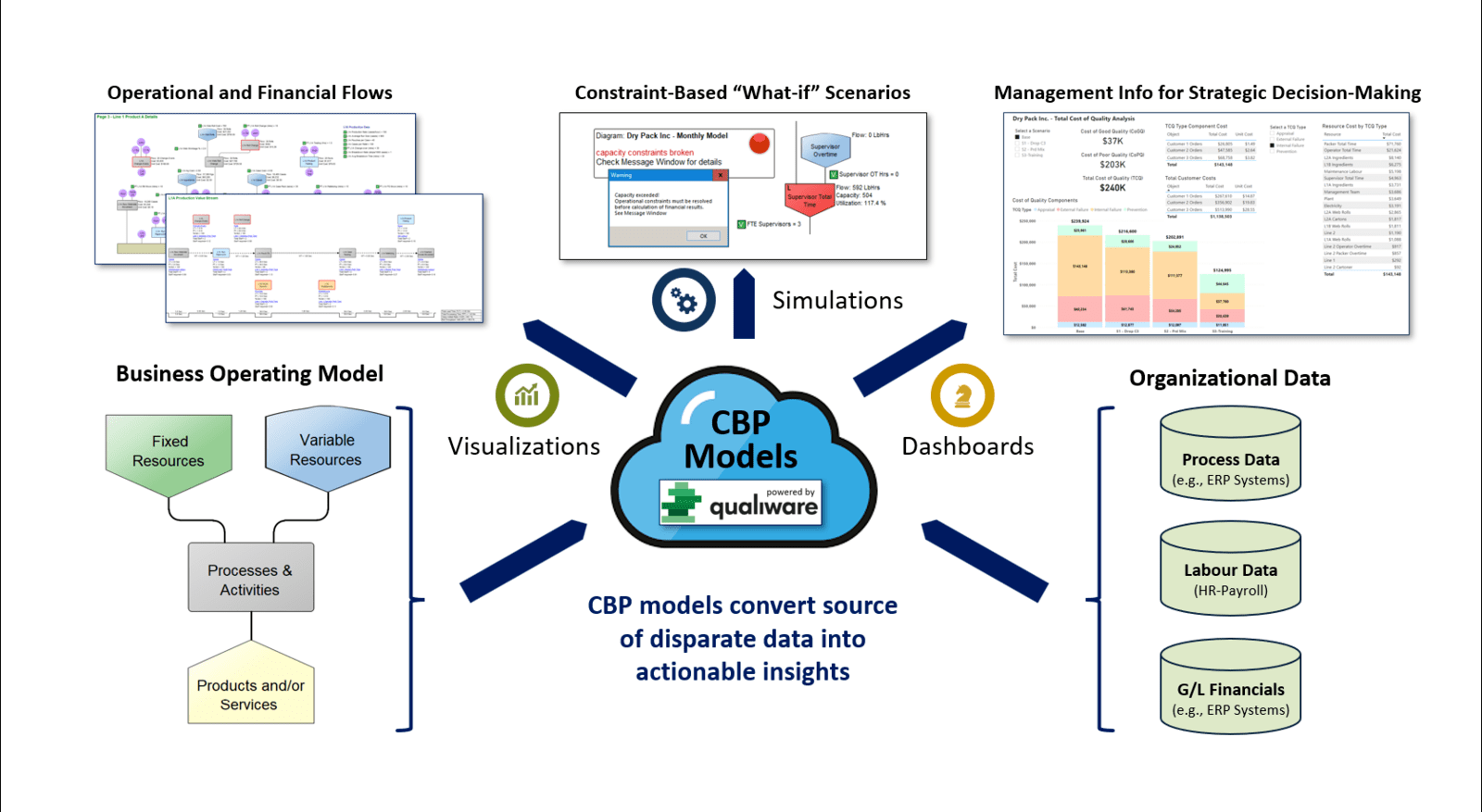In a February 2022 Gartner report, the Digital Twin solution market (software and supporting services) is expected to grow from $9B in 2021 to $183B in revenue by 2031.
Of the four types of Digital Twins, Digital Twin of an Organization (DTO) is projected to have the highest growth rate ($1.5B in 2021 to $59B in 2031).
Collaborative Business Planning (CBP) further enhances this position by expanding QualiWare EA capabilities in the Performance and Situation arenas of Gartner’s proposed “DTO Building Blocks”.
CBP: A powerful adjunct to your Digital Twin
CBP is a powerful adjunct to the QualiWare platform that allows any organization to develop predictive models for resource management, process improvement efforts, cost/profitability analysis, and evaluating change strategies.
As such, CBP model is considered a DTO solution, which Gartner has previously defined as “a dynamic software model of any organization that integrates operational and contextual data to understand how an organization operationalizes its business model, connects with its current state, responds to changes, deploys resources and delivers customer value.”
CBP is based on Landmark Decision’s “Business Process Analysis & Costing (BPAC)” methodology. BPAC marries two well-established business process optimization approaches together; Lean Value Stream Mapping (VSM) and Activity-Based Planning (ABP).
VSM provides a means to identify non-value-added (NVA) activities contained in any business process flow and understand their impact on total lead time and quality.
ABP can then be used to fully define the resource relationships and costs for both NVA and other activities which impact organization product and/or service costs and profits.
ABP also follows Theory of Constraints (TOC) principles which allow business managers to recognize and mitigate process bottlenecks that limit growth and profitability.
Transform organizational data into a business operating model
In the graphic below, CBP, powered by QualiWare, provides the ability to integrate operational and financial data into a comprehensive “current state” business operating model.
Once validated, this model can be used first for assessing present business performance and second, for any “future state” constraint-based “what-if” analysis.
Understanding before implementation
By flexing product and service volumes, testing process improvement ideas, and evaluating alternative resourcing strategies, organizations can better understand the impact of business changes BEFORE they are implemented (e.g., risk management).
CBP results can also be coupled with any BI solution to provide valuable insights for business performance and planning.
In summary, CBP offers business managers and executives the ability to super-charge their DTO adoption efforts and leverage their investment in the QualiWare platform to source enterprise data that can be used to simulate and manage organizational change.



